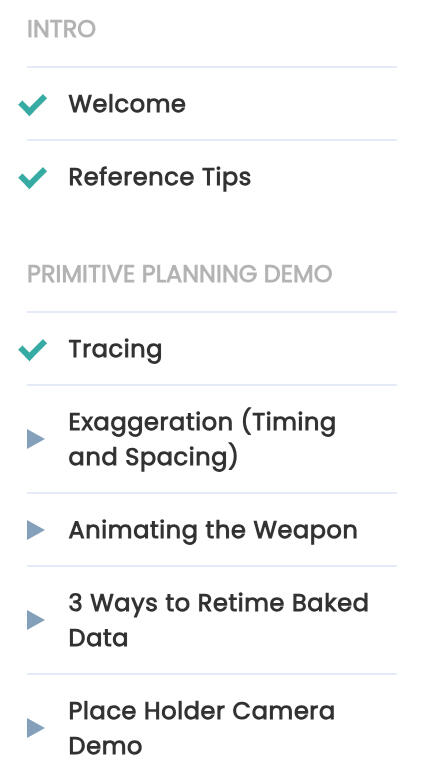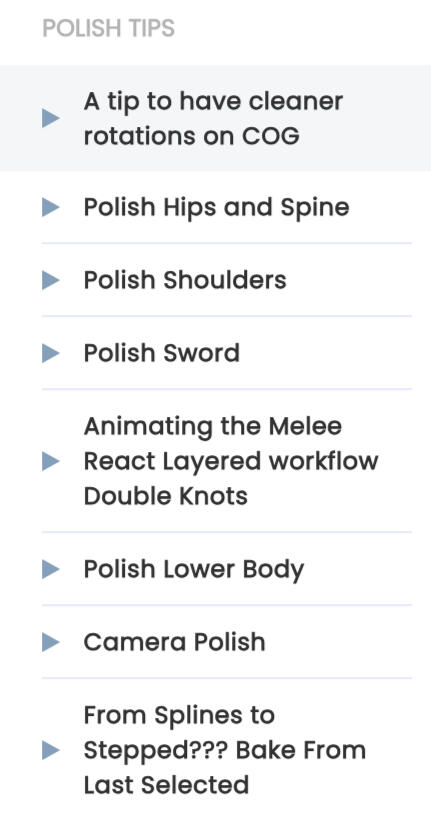Struggling To Meet Tight Animation Deadlines In Maya?
From Deadline Stress to Animation Success: Master the 20-Minute Workflow That Supercharges Your Maya Projects
Learn How To Craft Stunning, High-Impact Animations Using Basic Forms In Record Time
Dear Fellow Animator,Ever found yourself staring at Maya, wondering how you'll possibly finish your animation before the deadline?

I'm Stefan, and I've been there too!I remember my early days in the industry, pulling all-nighters and chugging coffee just to get a simple walk cycle done on time. It felt like I was always one step behind, no matter how hard I worked.Like you, I'm passionate about bringing digital characters to life. I've been fortunate enough to work in the video game industry for over a decade, contributing to various AAA games along the way.I have worked on games such as Tomb Raider, Last of Us Part II and Marvel's Avengers.For the past four years, I've been sharing what I've learned with aspiring animators from around the globe.And let me tell you…the struggles I see are common worldwide.
In my journey in becoming a game animator wasn't always smooth sailing. In fact, there was a time when I thought I'd never be able to keep my job in this industry.For most of my career, I was painfully slow.While other animators breezed through their shots, I was stuck, agonizing over every single pose.At times I felt like a fraud. A procrastinator. A fake animator just copying reference…and praying no one would notice how long it took me.…Every day, I'd come to work with a knot in my stomach, terrified that this would be the day they'd finally figure out I didn't know what I was doing.The thing is, it wasn't entirely my fault. And if you're struggling, it's not entirely yours either.Like many of us, I was taught the "Generic" way to animate, which most animation schools teach this workflow:1) Shoot reference
2) Thumbnail your storytelling poses
3) Block out your key poses
4) Add breakdowns
5) Go into splines
6) Polish, polish, polishBut for me, this methodical approach was a creativity killer. It made me feel like a robot, and it had many flaws. It didn't give me that feeling of spontaneity and animating quickly.
Here were some of my personal struggles with the commonly taught workflow that I just mentioned:
Switching from stepped to spline mode was my nightmare. My carefully crafted poses would turn into a mushy mess, and I'd waste hours trying to salvage the timing.
I felt like a robot, not an artist. My animations lacked personality because I was too afraid to deviate from the reference and started copying references almost frame by frame!
I used to dread every new shot, knowing I'd spend countless hours just copying reference without any real understanding or creativity and spontaneity.
I'd often stay late at the office, not because I was passionate, but because I was desperately trying to catch up with everyone else's productivity.
I didn’t feel like I was spontaneous in my workflow. Animating faster and roughly gave me more space for creativity and play.
The thought of tackling complex character interactions filled me with dread. I knew it would take me twice as long as my peers, further highlighting my shortcomings.
I was stuck in a cycle of procrastination and panic. I'd put off starting shots because I knew how long they'd take, then work myself to exhaustion trying to catch up.
If you're nodding along to any of these experiences, I want you to know something important:
You're not alone. And more crucially, it doesn't have to be this way.I know, because I've been there.And I found a way out…
It all changed when I hit rock bottom.
I was desperate to find a way to become more spontaneous in my workflow. I knew I had to go back to the basics, to the fundamental principles of animation we all learn at the beginning.That's when it hit me:
The bouncing ball exercise!What if I looked at every body part as a simple bouncing ball?

I started by stripping everything back to the most basic shapes. Instead of complex character rigs, I used simple cubes and boxes.No fancy controls, no intricate details – just pure, raw motion.And something magical happened.Suddenly, I could see the energy of each shot clearly. The timing, the spacing, the flow – it all made perfect sense.I wasn't getting lost in the details of finger positions or facial expressions. Instead, I was capturing the very essence of movement with basic shapes such as cubes and spheres.This wasn't just a new technique; it was a complete change in how I thought about animation.My work became faster and more efficient. But here's the amazing part: the quality improved too. By focusing on these fundamental principles through simple shapes, my final character animations became more dynamic and alive than ever before.This simple shift in perspective transformed my entire approach to animation. It wasn't about learning new software tricks or spending years perfecting my craft. It was about seeing animation in a new light, breaking it down to its most basic elements, and building it back up from there.And the best part? This method isn't just for me. It's a game-changer that can work for any animator, at any skill level.
This simple shift in perspective transformed my entire approach to animation.It wasn't about learning new software tricks or spending years perfecting my craft. It was about seeing animation in a new light, breaking it down to its most basic elements, and building it back up from there.As I continued to refine this method, I couldn't help but wonder: Why does this work so much better than traditional approaches?The answer became clear as I compared it to conventional animation techniques:Traditional animation methods often bog you down with complex rigs and time-consuming workflows, leaving you frustrated and struggling to meet deadlines.In contrast, my simple shape animation technique cuts through the noise, allowing you to focus on the essence of movement.While other approaches get you lost in details from the start, this method frees your creativity and dramatically speeds up your process.It's not just a different way to animate; it's a complete reimagining of the animation workflow that yields faster, more dynamic results.
Imagine being able to:
Instantly simplify complex character movements by seeing each body part as a basic bouncing ball, allowing you to focus on the core essence of motion, spacing, and energy.
Free yourself from the constraints of heavy rigs, enabling you to animate faster and more efficiently using simple cubes and boxes to nail down the fundamental motion.
Communicate your ideas crystal clear to directors, designers, and team members with easy-to-understand primitive shapes that convey the essence of your animation instantly.
Develop a keen eye for spacing and timing, transforming your ability to create dynamic and engaging animations that captivate viewers.
Dramatically reduce your animation time, allowing you to take on more projects or refine your work to perfection.
Overcome creative blocks by starting with basic shapes, giving you the freedom to experiment and innovate without getting bogged down in details.
Master the art of rapid prototyping, enabling you to test and iterate on ideas quickly, crucial for success in the fast-paced game industry.
Elevate your final animations by ensuring the foundational movement is solid before adding the polish of detailed character work.
Boost your confidence as an animator, knowing you can tackle any shot with a clear, systematic approach that yields consistent results.
Seamlessly adapt to different animation styles and projects, as this method works universally across character types and scenarios.
This method isn't just a technique; it's a paradigm shift that can revolutionize your entire animation process. And the best part? It's accessible to animators at any skill level, from beginners to seasoned professionals.
Take a look fast it usually takes me to get the idea across:
Reference footage: Typically captured in 5 minutes
Primitive shape tracing: Usually takes about 7 minutes to trace over the reference
Exaggerated timing and spacing, plus weapon animation: Completed in 30 minutes
Total time from concept to completion: Around 45 minutesThis simple method of tracing the reference with basic shapes, exaggerating spacing and timing, and then adding more details usually takes around 45 minutes.You can even do this in less time once you get more efficient.It's a much faster way of working out animation ideas as you go. The process is quick because you're animating simple shapes, which doesn't slow down your computer.This allows for efficient iteration and refinement throughout the animation process.
So the next step is:Once you have that basic motion, the rest is all about applying your character rig on top of the existing box...You can use basic constraints using a 3rd party script to quickly do this with the power of space switching to get basically free animation and build on top of that.Then take it to polish stage with all the tricks I teach you inside my new course.
This is the end result I got with this workflow. Not a single pose was created from scratch! (except the first pose)it's all done in layering and space switching.
and it was all done with my new workflow:
PRIMITIVE PLANNING TO POLISH
a killer way to animate lighting fast!
Here's what students of Primitive Planning to Polish have to say about this workflow:"Stefan's course was crucial in my understanding of layered and space switching workflows. I used to be afraid of redoing/breaking an animation I put a lot into but now I feel confident in experimenting and approaching animation in a new way."-Rob S.
Brooklyn, NY"Stefan's course is a great place to build from if you have trouble with pose to pose workflows. Instead of focusing on posing, try focusing just on your timing and spacing on one controller then layer in the rest of the information. This is what Stefan's course teaches."-Henry
Canada"Stefan simplifies complex animation concepts with simple primitives; from using references, camera work, posing and timing."-LeninI recently attended an incredible workshop led by Stefan. It was a masterclass in efficiency, providing essential knowledge about tools and techniques that have dramatically improved my workflow.Matej F.
Slovenia
Here's What You Get in this course:Lifetime Access to 22 Comprehensive Video Demonstrations of the Primitive Planning to Polish workflow course.
Here's a screenshot of all the Chapters and all the videos titles



for the course I'm offering an early bird offer is only good for one week. When that countdown timer hits zero, the price is going up.Why?Because the information in Primitive Planning to Polish is incredibly valuable. It's the result of years of experience in AAA game studios and countless hours of refining this unique animation technique.I'm sharing industry insights that can revolutionize your workflow.I want to reward those who recognize a good opportunity when they see it. That's why I'm offering this introductory price, but only for a limited time.
When I created Primitive Planning to Polish, I wanted to make it accessible to animators serious about transforming their workflow. This course packs years of industry experience and countless hours of technique refinement.But I can't keep this introductory price forever. The value of this course far exceeds the current price, which is why it will double in just 7 days.That's why I strongly recommend you take advantage of this limited-time offer right now.
PRIMITIVE PLANNING TO POLISH COURSE
$97
When you get Primitive Planning to Polish today, you'll have everything you need to revolutionize your animation workflow. Don't miss this opportunity to level up your skills and boost your productivity!-Stefan
Looking to purchase this for your team?
Gameanimatoracademy(at)gmail(dot)com